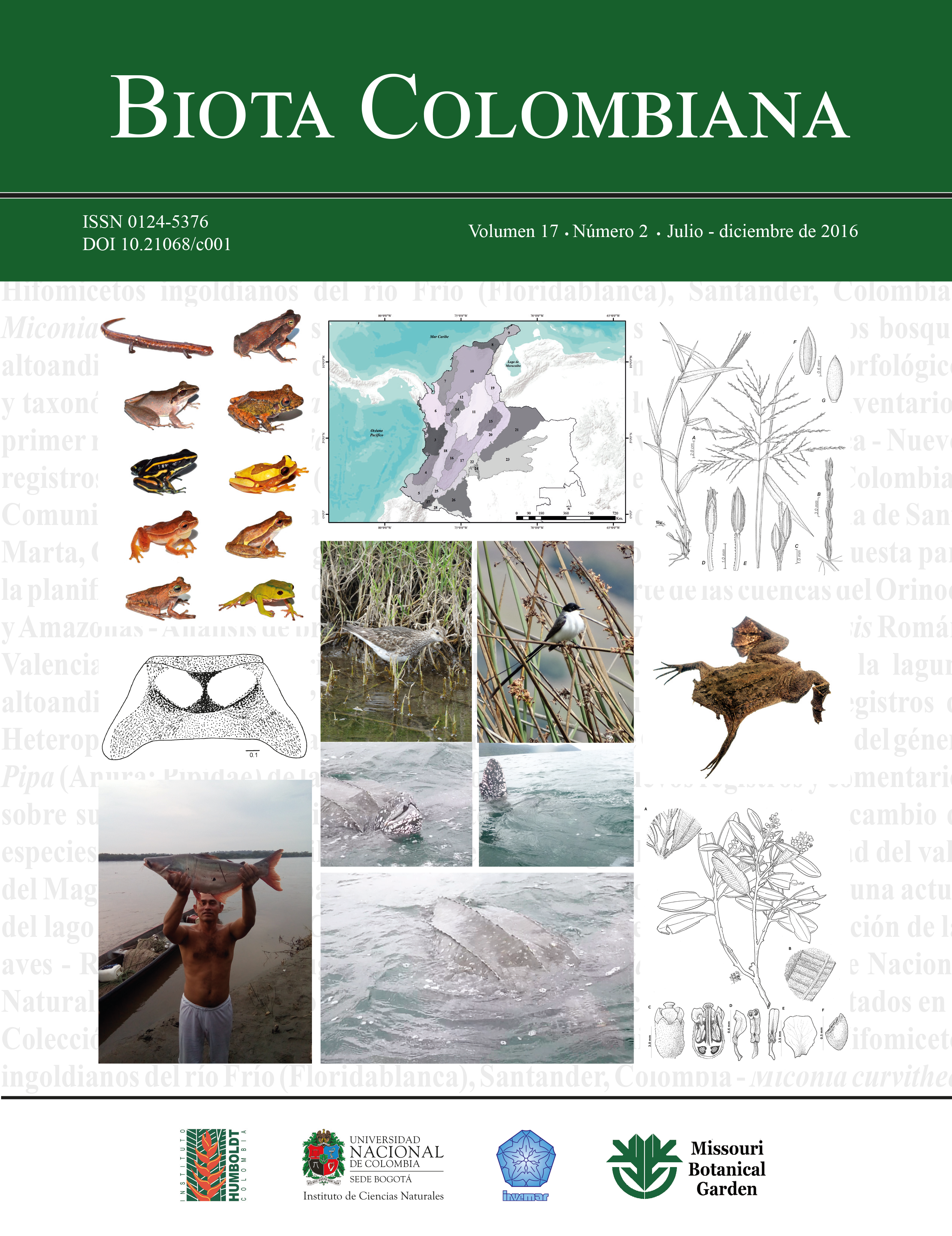Abstract (en):
Abstract (es):
Como resultado de estudios recientes en gramíneas neotropicales, se presenta el inventario del género Digitaria
para Sudamérica, el cual está representado por 65 taxones, 53 especies nativas (34 endémicas) y 12 especies introducidas-naturalizadas. La mayor riqueza específica de Digitaria se registró en Brasil (48 especies, de las cuales 12 son endémicas), seguido por Venezuela (29/1), Paraguay (28/0), Colombia (27/2), Argentina (26/1) y Bolivia (24/1). Por otra parte, se registra por primera vez para Sudamérica a D. velutina (Forssk.) P. Beauv. -una especie nativa de África, Arabia y Yemen- y se discute su similitud morfológica con D. abyssinica (Hochst. ex A. Rich.) Stapf. Los binomios D. bonplandii Henrard y D. mattogrossensis (Pilg.) Henrard, se reconocen como sinónimos de D. corynotricha (Hack.) Henrard.
Keywords:
Axonopus, Digitaria abyssinica, Flora of Colombia, Flora of South America, Neotropical grasses (en)
How to Cite
The works published in the journals of the Alexander von Humboldt Biological Resources Research Institute are subject to the following terms, in relation to copyright:
1. The patrimonial rights of the published works are assigned to Instituto de Investigación de Recursos Biológicos Alexander von Humboldt. The authors or institutions that elaborate the document agree to transfer the patrimonial rights to the Humboldt Institute with the sending of their articles, which allows, among other things, the reproduction, public communication, dissemination and dissemination of works.
2. The works of digital editions are published under a Creative Commons Colombia license:
Creative Commons License
This work is licensed under a Creative Commons Atribución-NoComercial-SinDerivar 4.0 Internacional.
> Attribution - Non-commercial - No Derivative: This license is the most restrictive of the six main licenses, it only allows others to download the works and share them with others, as long as their authorship is acknowledged, but they cannot be changed in any way, nor can they be used commercially.
3. The authors, when submitting articles to the editorial process of the magazines published by the Humboldt Institute, accept the institutional dispositions on copyright and open access.
4. All items received will be subjected to anti-plagiarism software. The submission of an article to the magazines of the Humboldt Institute is understood as the acceptance of the review to detect possible plagiarism.
5. The works submitted to the editing process of the magazines of the Humboldt Institute must be unpublished.


















